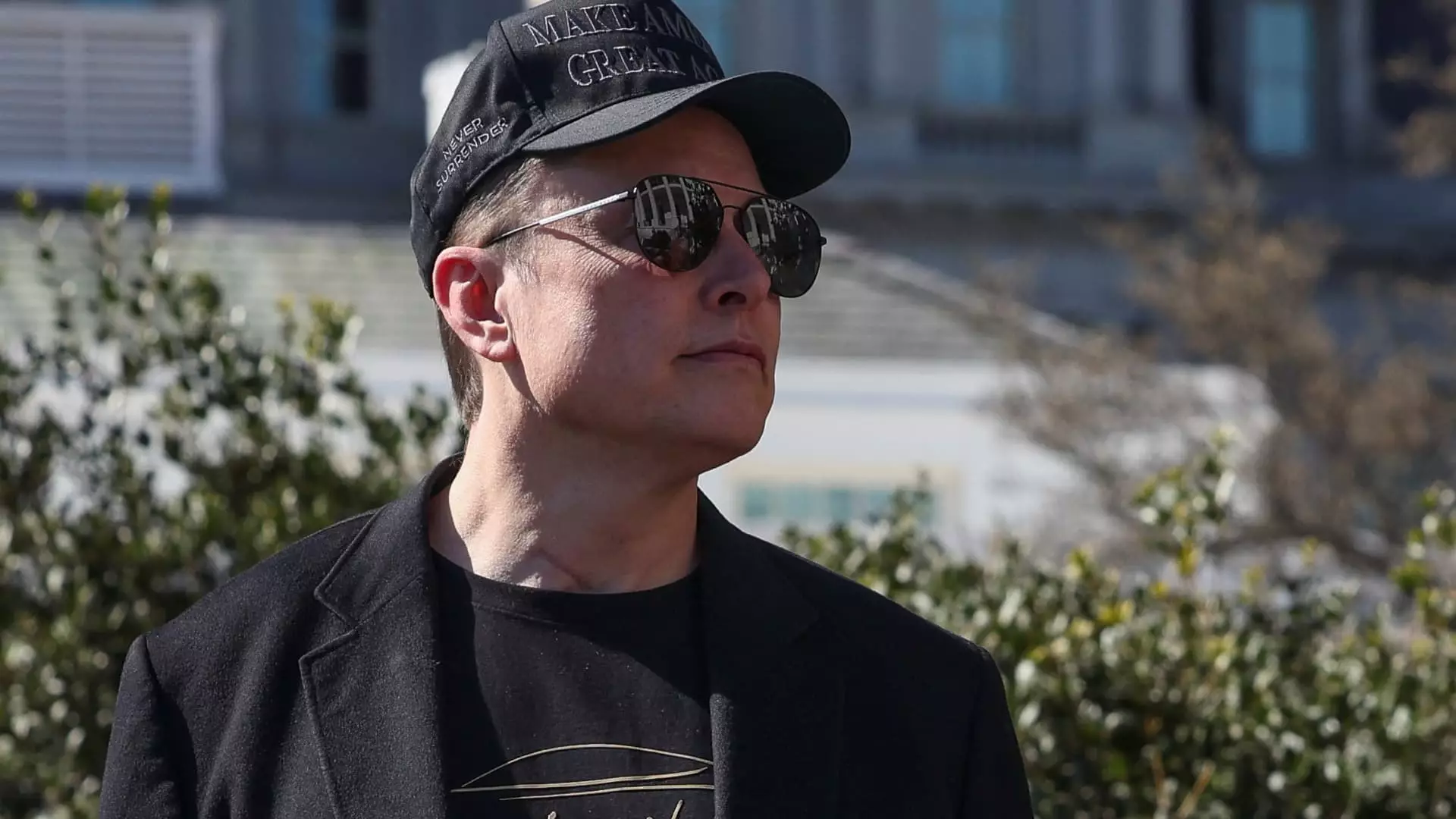Tesla’s recent first-quarter earnings reveal a striking disarray in a company that once symbolized unwavering growth and innovation. Reporting a staggering 71% drop in net income, Tesla has found itself in a precarious position that raises critical questions about its future in an increasingly competitive automotive landscape. As electric vehicle (EV) adoption accelerates, one would expect a thriving company like Tesla to remain dominant; however, reality tells a different story. With earnings per share (EPS) at just 27 cents—well below the anticipated 39 cents—it’s evident that something is amiss.
The automotive revenue took a particularly hard hit, plummeting 20% compared to last year, marking a stark contrast to the booming demand for electric vehicles. The reported revenue of $19.34 billion fell short of the expected $21.11 billion, emphasizing this unpredicted downward trend. Such dismal numbers reflect not only Tesla’s struggles but also a troubling signal for the entire EV sector as these companies recalibrate their strategies in the face of economic challenges and changing consumer demands.
The Influence of Political Dynamics
One significant factor influencing Tesla’s performance is the ongoing political climate. CEO Elon Musk’s time spent in the Trump administration has raised questions about his focus on the company amid sweeping governmental changes. The impending tariffs on critical automotive materials could further exacerbate Tesla’s struggles. In an industry where margins are already thin, potential increases in production costs could derail ambitious growth plans.
Furthermore, Tesla cited “dynamic political sentiment” as a fundamental concern, which hints at an unsettling correlation between governmental policies and market performance. The idea that an external factor—political maneuvering—can have such a pronounced impact on a tech-driven company underscores the fragility of business in the current high-stakes climate, where changes in trade policy can alter the operational landscape overnight.
Market Competition: The Rise of Lower-Cost Rivals
In addition to political pressures, Tesla faces growing competition, particularly from lower-cost manufacturers in China. With the EV market expanding rapidly, companies that can offer comparable technology at a fraction of the price pose a significant threat to Tesla’s market share. As Tesla struggles to innovate and reduce costs, it risks being outpaced by rivals who can easily capitalize on its missteps.
The market’s volatility was underscored by Tesla’s inability to keep pace with emerging competitors, especially in the autonomous driving space. As companies like Waymo dominate the robotaxi sector, Tesla’s promise to launch a driverless ride-hailing service in Austin by June may prove to be more of an aspiration than a likely reality.
Investor Confidence Dwindling
Tesla’s recent warning to investors regarding the “uncertainty in the automotive and energy markets” raises alarm bells. A company signaling caution rather than optimism undoubtedly shakes investor confidence. It’s disheartening to see a titan like Tesla navigating uncharted waters with such trepidation, especially when other tech firms are reaping benefits from clear and confident strategic plans.
What’s even more troubling is the company’s reliance on regulatory credits for revenue. The fact that Tesla would have reported a loss on automotive sales without these credits poses serious questions about its sustainability. While the electric vehicle market has plenty of growth potential, Tesla’s reliance on external factors to buoy its bottom line signifies a lack of genuine, inherent profitability.
A Glimmer of Hope in Energy Solutions?
Despite its setbacks in the automotive sector, Tesla’s energy generation and storage division showed promising signs with an impressive 67% revenue increase, bringing in $2.73 billion. This marks an essential pivot point for the company as it looks to diversify its revenue streams in the face of declining automotive sales. If Tesla can successfully position itself as a leader in energy storage solutions, this might just provide the lifeline it needs to recover from its current plight.
However, while innovation in energy solutions is encouraging, the continued reliance on foreign suppliers creates further complications. Understanding the delicate balance between localization of supply chains and global dependency will be pivotal as Tesla continues to navigate these turbulent times.
As of now, the outlook for Tesla appears complex and precarious, reflecting the intricacies of an industry in flux where adaptability, innovation, and strategic political maneuvering will be crucial for survival. The question remains: can Tesla overcome these multifaceted challenges, or will it fall victim to faster and more agile competitors?

